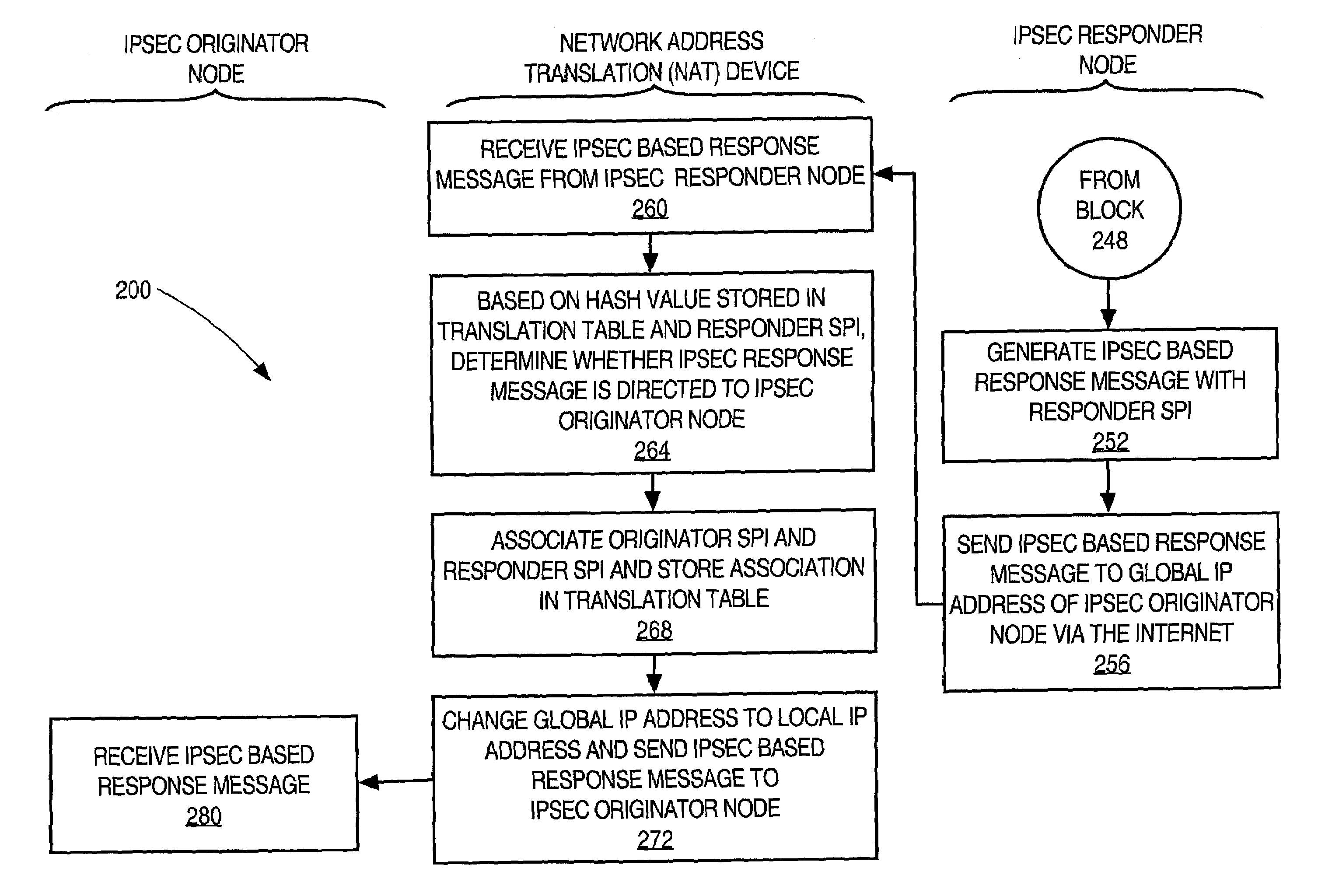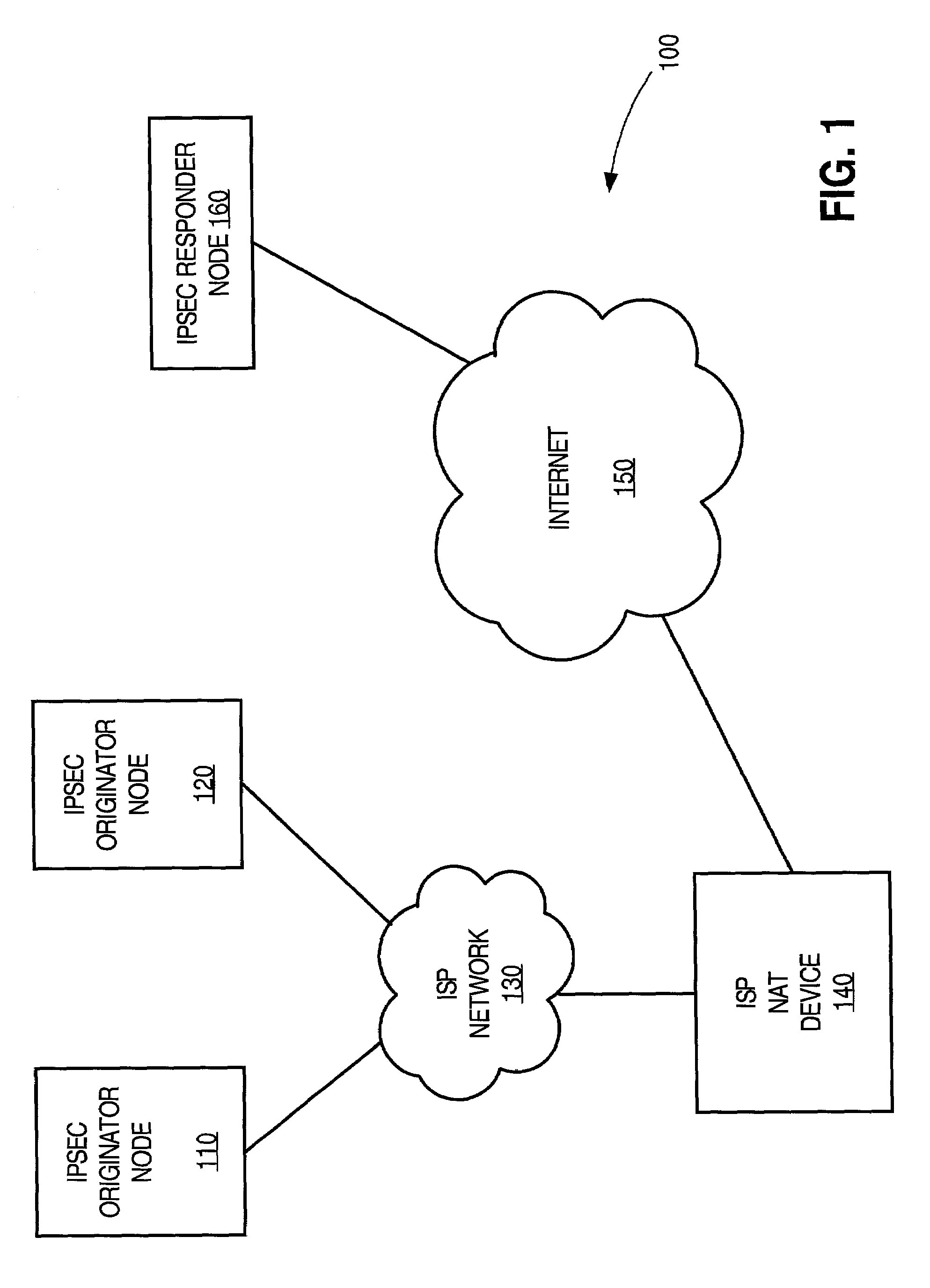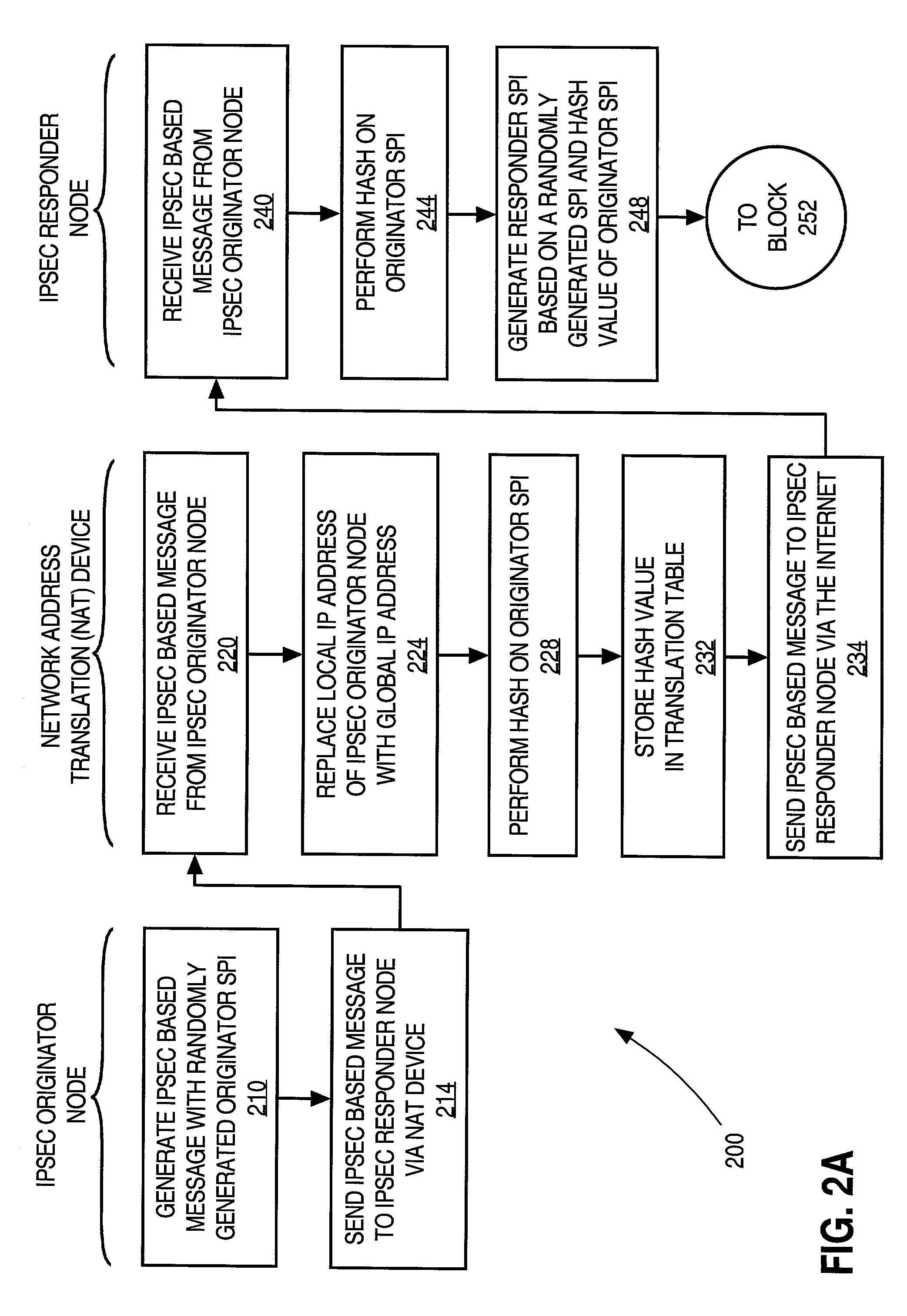Facilitating IPsec communications through devices that employ address translation in a telecommunications network
a technology of facilitating ipsec communication and telecommunications network, which is applied in the field of securing communications in the network, can solve the problems of security violation, ipsec security check failure, and esp does not secure the ip header, and achieve the effect of facilitating multiple ipsec communications
- Summary
- Abstract
- Description
- Claims
- Application Information
AI Technical Summary
Benefits of technology
Problems solved by technology
Method used
Image
Examples
Embodiment Construction
[0036]A method and apparatus for facilitating IPsec communications through devices that employ address translation in a telecommunications network is described. In the following description, for the purposes of explanation, numerous specific details are set forth in order to provide a thorough understanding of the present invention. It will be apparent, however, to one skilled in the art that the present invention may be practiced without these specific details. In other instances, well-known structures and devices are depicted in block diagram form in order to avoid unnecessarily obscuring the present invention.
[0037]In the following description, the embodiments are discussed under topic headings that appear in the following order:[0038]I. FUNCTIONAL OVERVIEW[0039]II. GENERATING SUBSEQUENT IDENTIFIERS BASED ON INITIAL IDENTIFIERS[0040]A. Approaches for Generating Result Values Based on Initial Identifiers[0041]B. Generating a Subsequent Identifier Based on a Result Value[0042]C. Cl...
PUM
 Login to View More
Login to View More Abstract
Description
Claims
Application Information
 Login to View More
Login to View More - R&D
- Intellectual Property
- Life Sciences
- Materials
- Tech Scout
- Unparalleled Data Quality
- Higher Quality Content
- 60% Fewer Hallucinations
Browse by: Latest US Patents, China's latest patents, Technical Efficacy Thesaurus, Application Domain, Technology Topic, Popular Technical Reports.
© 2025 PatSnap. All rights reserved.Legal|Privacy policy|Modern Slavery Act Transparency Statement|Sitemap|About US| Contact US: help@patsnap.com



